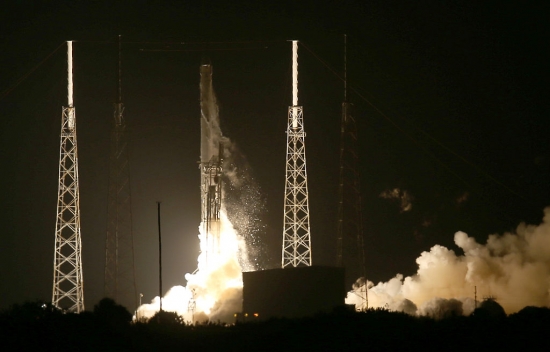-
Tips for becoming a good boxer - November 6, 2020
-
7 expert tips for making your hens night a memorable one - November 6, 2020
-
5 reasons to host your Christmas party on a cruise boat - November 6, 2020
-
What to do when you’re charged with a crime - November 6, 2020
-
Should you get one or multiple dogs? Here’s all you need to know - November 3, 2020
-
A Guide: How to Build Your Very Own Magic Mirror - February 14, 2019
-
Our Top Inspirational Baseball Stars - November 24, 2018
-
Five Tech Tools That Will Help You Turn Your Blog into a Business - November 24, 2018
-
How to Indulge on Vacation without Expanding Your Waist - November 9, 2018
-
5 Strategies for Businesses to Appeal to Today’s Increasingly Mobile-Crazed Customers - November 9, 2018
SpaceX’s Falcon 9 Rocket Makes Historic Sea Landing
A SpaceX Falcon 9 rocket blasted off from Florida on a cargo run for the International Space Station on Friday, and its reusable main-stage booster landed on an ocean platform in a dramatic space-flight first. Making up more than 3,000 pounds of that cargo is the Bigelow Expandable Activity Module, or the BEAM – an expandable habitat that will provide 565 cubic feet of volume for astronauts to move around arrived at the International Space Station today.
Advertisement
It will be attached to the space station this Saturday, but won’t be inflated until the end of May. This is the eighth contracted mission that SpaceX is carrying out for NASA.”We are in the early phase of a new kind of spacecraft that offers a lot of promise”, Bigelow said.
In late December, SpaceX made history when it successfully landed a Falcon 9 rocket at a newly-created landing zone at the Cape Canaveral Air Force Station in Florida, a feat that was once thought of as virtually impossible.
NASA awarded SpaceX and Orbital ATK contract modifications in 2015 in an effort to extend the commercial resupply services contracts that it initially awarded to both firms in 2008.
With the rocket back at Cape Canaveral, SpaceX engineers will re-fire the rocket’s engines ten times in a row to determine re-usability, according to the process Musk explained on Friday.
Speaking to reporters later, Mr Musk said that being able to return costly rocket parts for repeated use, instead of jettisoning them into the ocean after each launch, will make space flight less expensive and less harmful to the environment.
NASA also has Mars in its sights and looks to send astronauts there in the 2030s.
This marks a very important milestone in the history of space aviation since reusable launch vehicles are expected to revolutionise space travel in many ways such as bringing down costs and saving time.
SpaceX also plans to debut a heavy-lift version of the Falcon rocket this year, equipped with 27 engines powering its first-stage, compared to the nine now used. He ended his historic mission last month.
Advertisement
After the successful launch and landing at sea of the SpaceX’s Falcon 9 rocket on Friday, the CEO and founder of the company, Elon Musk revealed further plans for the rocket. Cygnus and SpaceX will be sending their next supply missions up on June 24 (scheduled date).




























